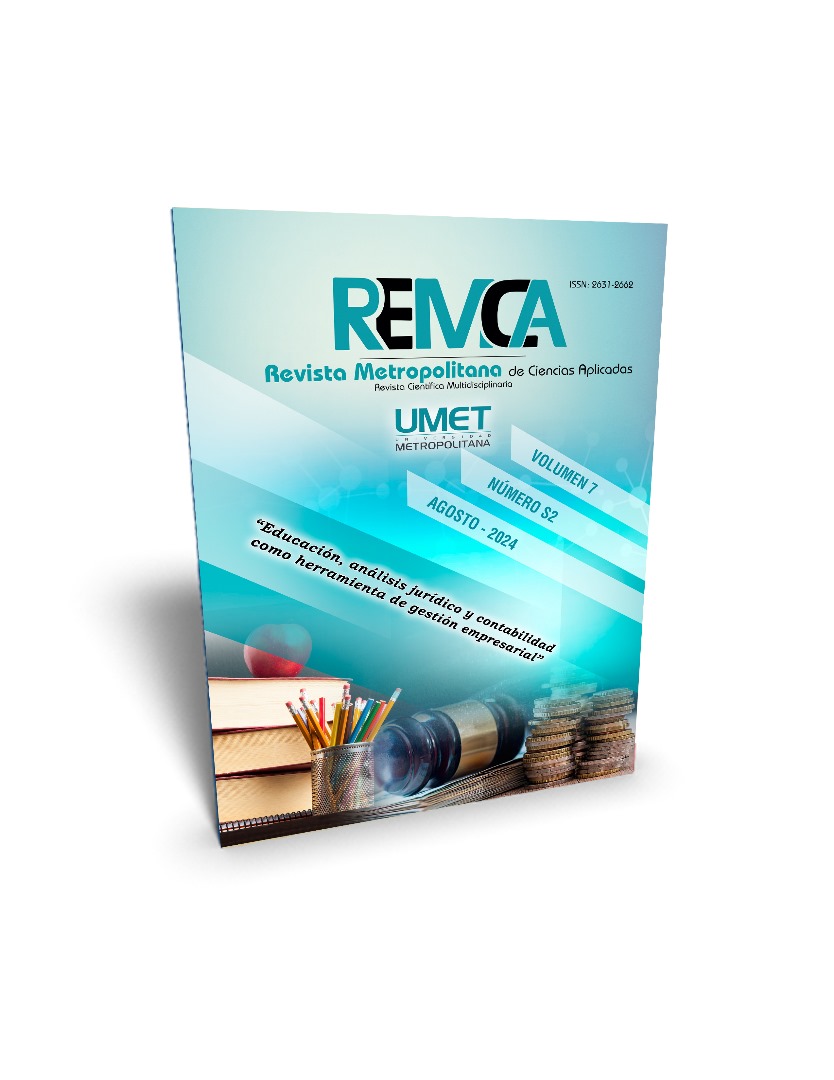Predictive model to determine patterns and trends that influence work accidents
DOI:
https://doi.org/10.62452/qrqpc986Keywords:
Accidents, data science, predictive models, data mining, securityAbstract
Safety at work is a concern for any organization that aspires to excellence, not only because it guarantees an accident-free workspace, but also because it increases the confidence, commitment, and motivation of employees. Using advanced tools and analytical techniques to explore large and small data sets can help identify these issues early enough to make timely decisions. Despite concerns about accidents, few analyzes have been conducted to date to identify specific trends or patterns, so this study focuses on a database containing information on accidents that occurred between 2015 and 2023 at a company. of the State. The main objective is to analyze the causes of accidents. Machine learning algorithms and data science techniques were used to identify patterns and trends in workplace accidents. The data is then classified in detail to better understand the changing behavior based on linear regression. After analyzing the forecasts, it was determined that they were very consistent with the actual results, which confirms the precision of the model used.
Downloads
References
Ampuero, E., Pozo, M., & Delgado, K. (2018). Administración de riesgo laboral en el Ecuador. Digital Publisher, 3(5), 1-10. https://www.593dp.com/index.php/593_Digital_Publisher/article/view/66
Arango, J., Correa, Y., & Luna, J. (2020). La salud ocupacional y su respuesta histórica a las necesidades de salud de los trabajadores. Revista Cubana de Salud y Trabajo, 21(2), 14-29. https://revsaludtrabajo.sld.cu/index.php/revsyt/article/view/140
Candonga, J., & Samaniego, P. (2021). Percepción de riesgos laborales en el ámbito ocupacional universitario. Revista Publicando, 8(28), 47-58. https://doi.org/10.51528/rp.vol8.id2147
García, J. (2020). Modelo predictivo para la identificación de actividades de la vida diaria (ADL) en ambientes indoor usando técnicas de clasificación basadas en machine learning. (Tesis de maestría). Universidad de la Costa.
Soto, L., & Melara, M. (2018). Riesgos laborales del personal de enfermería en el servicio de infectología del Hospital Nacional de niños Benjamín Bloom de mayo -septiembre de 2017. (Tesis de maestría). Universidad de El Salvador.
Toro, J., Vega, V., & Romero, A. (2021). Los accidentes de trabajo y enfermedades profesionales y su aplicación en la justicia ordinaria. Universidad y Sociedad, 13(2), 357-362. http://scielo.sld.cu/scielo.php?script=sci_abstract&pid=S2218-36202021000200357
Downloads
Published
Issue
Section
License
Copyright (c) 2024 Erika Zamora-Cevallos, Leyda Zavala-Arteaga, Byron Oviedo-Bayas, Mireya Stefania Zúñiga-Delgado (Autor/a)

This work is licensed under a Creative Commons Attribution-NonCommercial-ShareAlike 4.0 International License.
Authors who publish in Revista Metropolitana de Ciencias Aplicadas (REMCA), agree to the following terms:
1. Copyright
Authors retain unrestricted copyright to their work. Authors grant the journal the right of first publication. To this end, they assign the journal non-exclusive exploitation rights (reproduction, distribution, public communication, and transformation). Authors may enter into additional agreements for the non-exclusive distribution of the version of the work published in the journal, provided that acknowledgment of its initial publication in this journal is given.
© The authors.
2. License
The articles are published in the journal under the Creative Commons Attribution-NonCommercial-ShareAlike 4.0 International License (CC BY-NC-SA 4.0). The terms can be found at: https://creativecommons.org/licenses/by-nc-sa/4.0/deed.en
This license allows:
- Sharing: Copying and redistributing the material in any medium or format.
- Adapting: Remixing, transforming, and building upon the material.
Under the following terms:
- Attribution: You must give appropriate credit, provide a link to the license, and indicate if any changes were made. You may do this in any reasonable manner, but not in any way that suggests the licensor endorses or sponsors your use.
- NonCommercial: You may not use the material for commercial purposes.
- ShareAlike: If you remix, transform, or build upon the material, you must distribute your creation under the same license as the original work.
There are no additional restrictions. You may not apply legal terms or technological measures that legally restrict others from doing anything the license permits.




